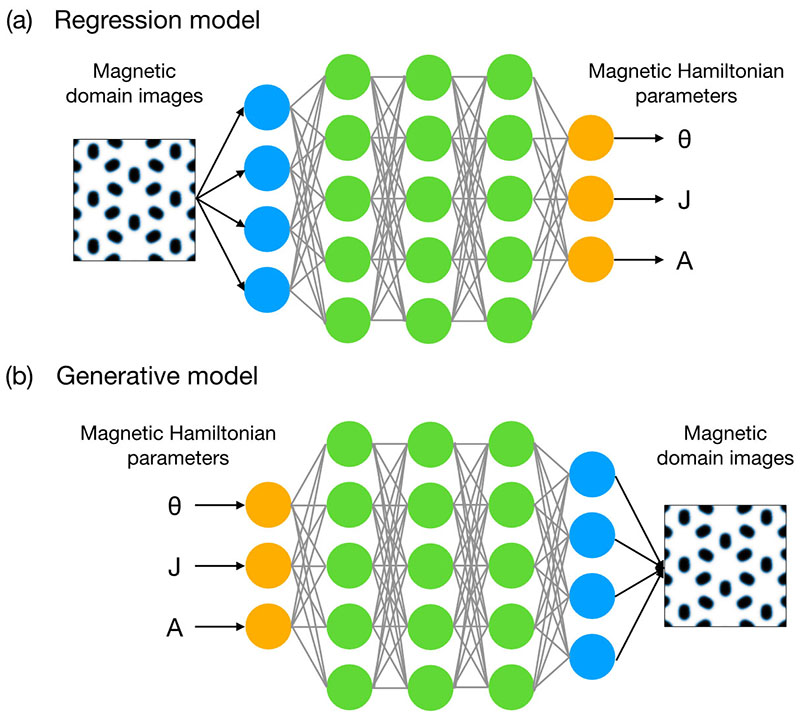| Jul 03, 2024 |
Artificial intelligence for studying twisted van der Waals magnets
(Nanowerk News) Researchers at the Institute for Basic Science (IBS) in South Korea have developed artificial intelligence techniques for analyzing twisted van der Waals magnets. Spearheaded by Dr. KIM Kyoung-Min from the IBS Center for Theoretical Physics of Complex Systems, these innovative techniques enable a streamlined and reliable analysis of these complex systems, eliminating the need for previous resource-intensive simulations and marking a significant advancement in the field.
|
|
The findings have been published in Machine Learning Science and Technology ("Deep learning methods for Hamiltonian parameter estimation and magnetic domain image generation in twisted van der Waals magnets").
|
 |
| Schematic diagrams illustrating two deep neural network models developed in this study. (a) The regression model for estimating magnetic Hamiltonian parameters from input magnetic domain images. (b) The generative model for producing predicted magnetic domain images based on input parameters. (Image: IBS)
|
|
Theoretical analysis of twisted van der Waals magnets has traditionally relied on atomistic spin simulations to accurately model intricate magnetic interactions. While precise, these methods are hindered by their resource-intensive nature. Approximation approaches have been developed to address this issue, but they often lack accuracy. Consequently, there is a crucial need for theoretical frameworks that are both efficient and reliable to advance this field.
|
|
To address these challenges, the research team developed two innovative deep neural network models: a regression model and a generative model. The regression model's neural networks can predict the magnetic parameters of twisted bilayer CrI3 from magnetic domain images generated through atomistic spin simulations. Conversely, the generative model's neural networks can produce precise magnetic domain images from given magnetic parameters. Once trained, these networks can generate the desired data without requiring time-consuming simulations, greatly reducing the necessary computing resources.
|
|
The team demonstrated that their trained neural networks can make highly precise predictions that align with simulation data. They further validated that their networks retain predictive power even with noisy data. This analysis suggests that their methods can be effectively applied to imperfect data, such as experimental data, and can be used in both numerical simulation studies and experimental investigations.
|
|
“The field of twisted van der Waals magnets has great potential, and understanding the interplay between intricate magnetic interactions in these systems is crucial,” remarked Dr. KIM Kyoung-Min, the corresponding author of this study. “Our deep learning methods make significant advancements in this pursuit by offering highly accurate data generation without resource-intensive simulations. Leveraging our streamlined techniques, future investigations can greatly benefit, potentially applying twisted van der Waals magnets in the development of new nanoscale magnetic devices.”
|

